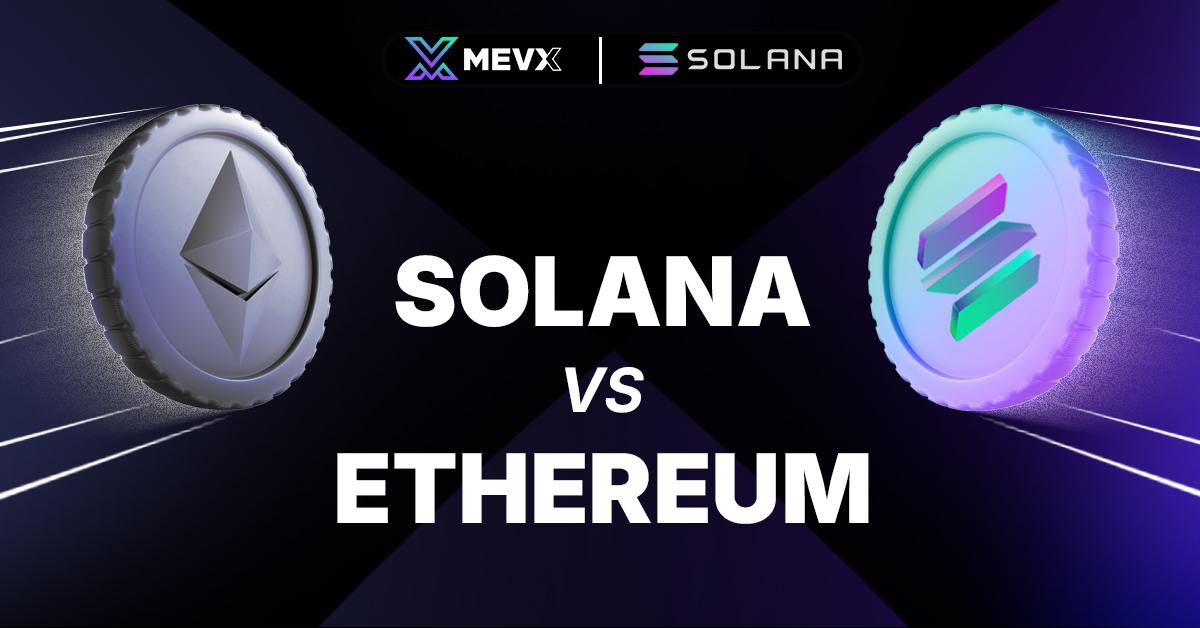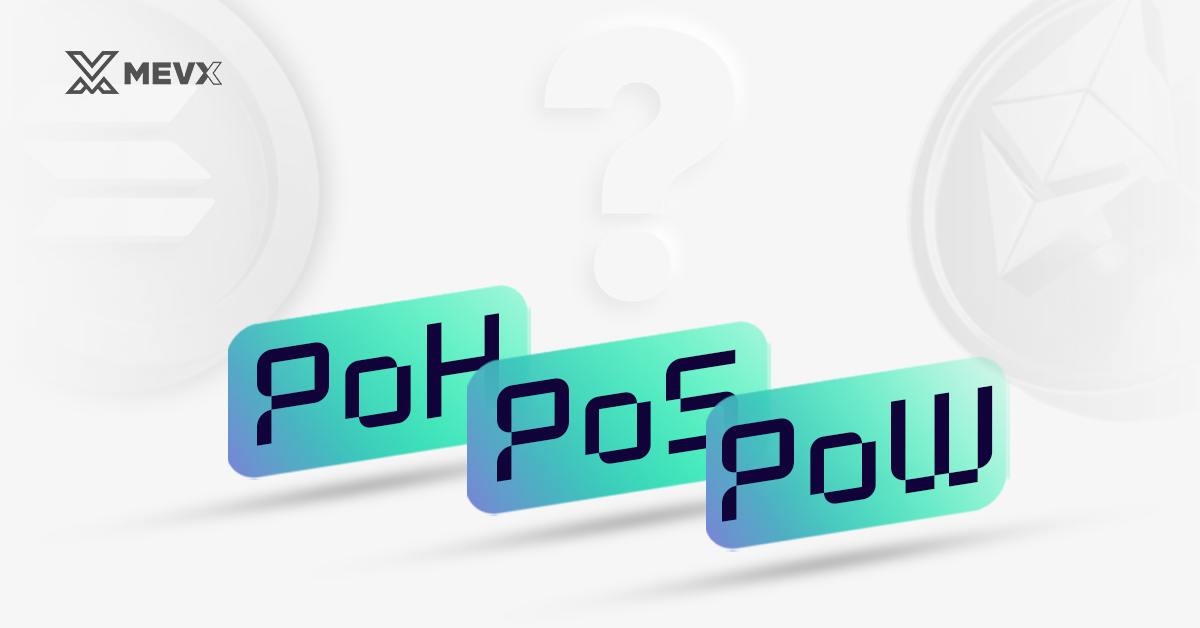Main Takeaways
- This article compares Solana and Ethereum on many criteria.
- We also provide the pros and cons of each blockchain.

A detailed comparison between Solana and Ethereum
Introduction
Alongside Ethereum, Solana has easily established itself as one of the most popular blockchain platforms, with its own perks targeting developers, investors, and users. Ethereum has instant recognition in the blockchain space for its extended past and notable innovations with smart contracts and dApps. On the other hand, the new independent ecosystem of Solana captures more attention thanks to fast transactions and low fees.
It is vital for anyone desiring to deal with blockchains to comprehend the differences between these two platforms. Whether you are a developer, an investor, or just eager to discover cryptocurrency markets, knowing the strengths and weaknesses of Solana and Ethereum can greatly impact your decisions.
1. Transaction Speed and Scalability
Solana: Fast Transaction Speeds and High Throughput
The most attractive feature of Solana is its amazing transaction speed. The network can handle up to 65,000 transactions per second (TPS), simply overshadowing Ethereum’s current capabilities. This high throughput is possible thanks to the innovative design of Solana’s system, the Proof of History (PoH) consensus mechanism, which processes transactions in parallel and reduces the time needed to reach a consensus on each transaction.
Because of its high scalability, Solana has also been embraced by many users and developers, especially in the case of DeFi (decentralized finance) applications, NFT (non-fungible token) markets, and other markets that require transactions to take place quickly and frequently.
Ethereum: Slower Speeds but Proven Reliability
In contrast, Ethereum can only process around 15-30 TPS. Such lower throughput has been a cause of congestion, especially during peak loading periods, leading to delays in transaction times.
Ethereum’s switch from Proof of Work (PoW) to Proof of Stake (PoS) has greatly improved the scalability of the platform. However, when compared to Solana, the efforts did not seem enough. The plan for the next stage promising to resolve the current scalability issues, called Ethereum 2.0, was shut down due to some technical impossibilities.
Comparative Analysis
As for the transaction speed or scalability, it can’t be denied that Solana beats Ethereum hands down. The ability to handle large volumes of transactions without network congestion makes it the ultimate destination for developers wanting to build scalable applications.
2. Consensus Mechanism
The differences in consensus algorithms of Soalana and Ethereum
Solana: Proof of History (PoH) Combined with Proof of Stake (PoS)
Solana counters conventional consensus mechanisms by introducing a new way to process transactions called Proof of History (PoH), complementing the more traditional Proof of Stake (PoS) consensus. With PoH, every transaction will be assigned a unique timestamp, easing the process of organizing the transactions in order. Meanwhile, PoS protects the chain by requiring validators to stake Solana tokens in the network. This combination guarantees that Solana can carry out transactions much faster than any other chain without risking its security.
Ethereum: From Proof of Work (PoW) to Proof of Stake (PoS)
Proof of Work (PoW) is a network consensus protocol that uses miners’ resources to process transactions. These miners have to perform particular calculations to prove a transaction is valid in the blockchain. It is infamous for high energy consumption while offering lower transaction throughput. Ethereum used to rely on this consensus mechanism.
By switching to PoS, Ethereum is more energy-efficient and scalable. With PoS, the validators validate transactions based on the number of tokens they locked up, increasing the transaction processing time while reducing the computational resources needed.
Impact on Speed and Energy Consumption
To achieve high speed and performance at lower energy costs, Solana has been flexible with a hybrid of PoH and PoS, which is more efficient compared to the current PoS of Ethereum.
3. Gas Fees and Cost Efficiency
Solana: Extremely Low Transaction Fees
One of the major benefits associated with Solana is the low transaction fees. Depending on the network demand, the fees might vary. However, Solana’s fees typically amount to a fraction of a cent per transaction. This is incredibly helpful for businesses where transaction fees could outscale the profit, like DeFi applications.
Ethereum: Higher Gas Fees
The gas fees of Ethereum are much higher than those of other blockchains, especially during peak times. As the gas fees fluctuate by demand, users may have to pay even more than the value of the transaction. This has been one of the major issues that Ethereum users have been facing, especially with DeFi and NFT trading.
Cost Comparison and Implications
For both developers and users, Solana’s lower fees make this network more favorable in high-frequency applications and small-value transactions. However, fees are not a significant deterrent for Ethereum’s users. The user base of Ethereum is attracted by its established ecosystem, security, and network reliability.
4. Smart Contracts and dApps Ecosystem
Solana: Emerging dApps Ecosystem
Steadily, Solana has been growing its dApps ecosystem, attracting both established and new developers. Thanks to the Solana Foundation, the platform has managed to encourage creativity through activities such as providing grants, hackathons, and other developer-focused activities. Some of the most well-known projects on the Solana blockchain are Serum, a decentralized exchange (DEX), and Raydium, an automated market maker (AMM) for DeFi.
Ethereum: Leader in Smart Contracts and dApps
Ethereum has occupied the leading stage in the smart contracts and decentralized application areas. Within the ecosystem, thousands of dApps have flourished, including DeFi apps such as Uniswap and Aave, as well as NFT exchanges such as OpenSea. Ethereum’s native programming language, Solidity, has set the standard for developers of smart contracts in other competing chains.
Developer Preferences and Platform Growth
Although the developers still prefer Ethereum because of its mature ecosystem, Solana is quickly gaining favor due to the support for dApp developers and its developer-friendly infrastructure. Solana’s super low fees and rapid speed make it a good choice for developers who want to avoid high gas fees on Ethereum.
5. Security and Decentralization
Solana: Fewer Validators, Less Decentralization
Critics point to Solana’s low level of decentralization when comparing the two blockchains. Solana’s fewer validator nodes, while enhancing the speed of transactions, also lead to concerns about centralization. In this case, a group of validators can easily coordinate to manipulate or put down the network.
Ethereum: More Decentralized with Larger Node Network
Ethereum, with thousands of nodes, is considered more decentralized than Solana. It is difficult for a single entity or a small group to take control of the network. Due to this high level of decentralization, Ethereum is believed to be more secure than Solana.
Comparison of Security Features
Ethereum’s impressive validator network has ensured the security of the blockchain, but at the cost of speed and efficiency. Solana, on the other hand, aims to provide users with rapid speed at a low fee by lowering the level of decentralization.
Security and Decentralization of Solana and Ethereum
6. Use Cases and Adoption
Solana: DeFi, NFTs, and Low-Cost Projects
The meteoric rise of Solana as a go-to platform for DeFi and NFT projects can be attributed to its rapid transaction speed and low fees. These characteristics complement projects that require frequent transactions. The expanding Solana ecosystem includes marketplaces like Magic Eden NFT and DeFi platforms like Serum.
Ethereum: Pioneer in DeFi and NFTs
Undoubtedly, Ethereum is the queen of DeFi and NFTs. It was the first to support smart contracts and currently stands as the backbone of most DeFi and NFT marketplaces. Being the first mover has given Ethereum a massive user base, and its established ecosystem makes it the platform of choice for many developers.
Strengths and Use Cases
Ethereum remains the dominant channel for DeFi and NFTs, and Solana’s strong emergence has raised its position, especially for newer projects that value speed and low cost.
Conclusion
Both Solana and Ethereum have their own strengths and weaknesses. Solana is seen as a good fit for high throughput projects due to its transaction speeds, low fees, and growing developer ecosystem. Meanwhile, the important reasons for using Ethereum are its well-established ecosystem, high level of decentralization, and leadership in DeFi and NFTs.
In the comparison of Solana and Ethereum, the potential application or investment specifics of the project should always be taken into account. For example, if you want a more affordable and faster platform, Solana is a perfect choice. On the contrary, if security and a higher level of decentralization are your top priorities, Ethereum is less risky.
As both continue to advance for the betterment of their perspective users, the war between Solana and Ethereum is likely to be hotter. Eventually, the users of these two blockchains can benefit from this war.
Share on Social Media:


